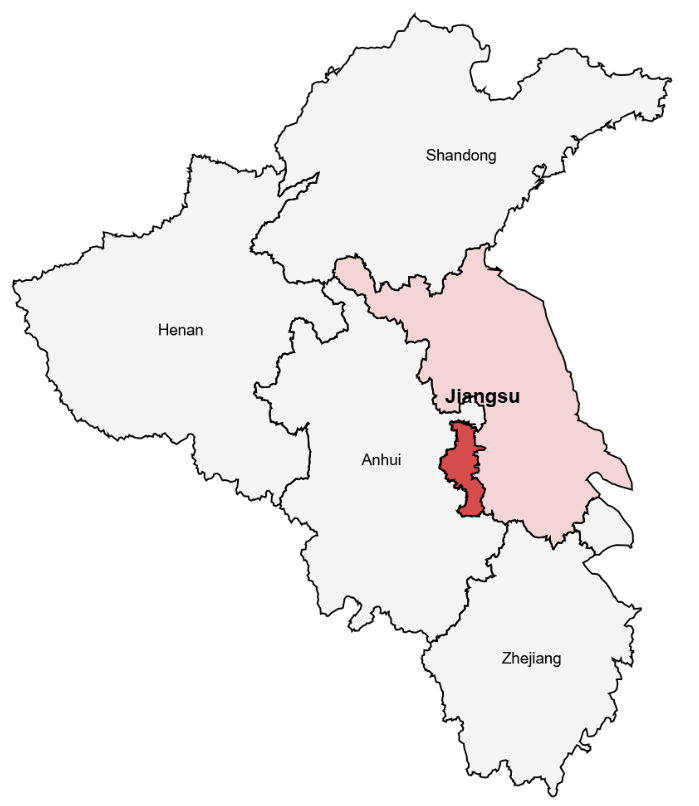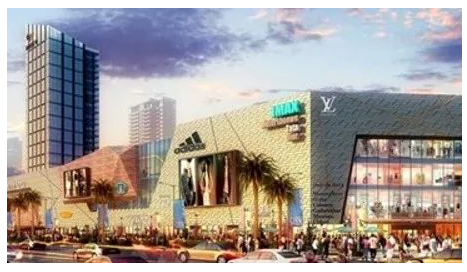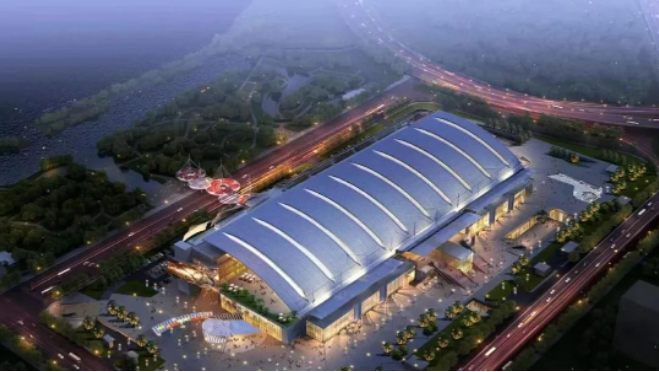2023 The 12th China (Nanjing) International Wine And Food Fair (CNWFF2023) will be held on 10 to 12 August 2023 at Nanjing International Exhibition Center.

01 The Economic Status of NanjingNanjing’s location, population, GDP, consumption capacityNanjing, located in eastern China, on the lower reaches of the Yangtze River, beside the river and the sea. It is the capital city of Jiangsu Province, a sub-provincial city, a megacity, and the core city of the Nanjing metropolitan area. This transportation hub is an important gateway city for the development of the central and western regions driven by the Yangtze River Delta as planned by the State Council, and an important city for the strategic intersection of the eastern coastal economic belt and the Yangtze River economic belt.At the end of 2022, the city's permanent population is 9.4911 million, an increase of 67,700 or 0.72% over the end of the previous year. Among them, the urban population was 8.258 million, accounting for 87.01% of the total population (urbanization rate of permanent residents), an increase of 0.11 percentage points over the previous year.In 2022, Nanjing's total GDP was 1,690.785 billion yuan, ranking tenth among the top 20 GDP cities in China; in 2021, Nanjing's total GDP was 1,635.532 billion yuan; in 2020, Nanjing's total GDP was 1481.795 billion yuan.In 2022, the per capita disposable income of all residents in Nanjing was 69,039 yuan, an increase of 4.4% over the previous year. Among them, the per capita disposable income of urban residents was 76,643 yuan, an increase of 4.1%; the per capita disposable income of rural residents was 34,664 yuan, an increase of 6.0%.In 2022, the per capita consumption expenditure of all residents in Nanjing was 40,313 yuan, an increase of 3.1% over the previous year, of which food, tobacco and alcohol expenditure was 10,482 yuan, an increase of 2.9% over the previous year. Among them, the per capita consumption expenditure of urban residents was 43,629 yuan, an increase of 2.7%; the per capita consumption expenditure of rural residents was 25,322 yuan, an increase of 5.5%.In the 2021 national social consumption rankings of key cities, Nanjing ranks eighth, after Shanghai, Beijing, Chongqing, Guangzhou, Shenzhen, Chengdu, and Suzhou.Nanjing’s international positioningIn October 2022, Kearney, an international management consulting company, recently released the 2022 Global City Index Report, revealing the "Global Cities Comprehensive Ranking" (GCI) and "Global Cities Potential Ranking" (GCO). This report includes 156 cities around the world in the scope of analysis, and Nanjing ranks 91st and 58th on the two lists respectively. Among them, Nanjing's comprehensive ranking of global cities has ranked 7th among other cities in China for two consecutive years, and its ranking of global city potential has risen by 5 places compared with last year.In September 2022, the 32nd Global Financial Center Index Report (GFCI 32) is freshly released. Among the 119 global financial centers that entered the list, Nanjing's ranking jumped to 83rd, a record high. At the same time, Nanjing is also the only city in Jiangsu Province on the list. Compared with the previous period, Nanjing's ranking has risen by 24 places this time, ranking the second in the world and the first in China.Nanjing covers the radiation range of Jiangsu ProvinceNanjing is the capital city of Jiangsu Province and the political and economic center of Jiangsu Province, covering 13 cities, 11 districts and 2 counties in Jiangsu Province. The 11 districts are: Xuanwu, Baixia, Qinhuai, Jianye, Gulou, Xiaguan, Pukou, Liuhe, Qixia, Yuhuatai and Jiangning. The two counties are: Lishui County and Gaochun County.Population, GDP, consumption capacity of Jiangsu ProvinceAccording to the results of the seventh national census, the resident population of Jiangsu Province is 84.748 million, an increase of 6.0881 million in the past 10 years. Among the province's permanent population, 62.2424 million people live in urban areas, accounting for 73.44%; 22.5056 million people live in rural areas, accounting for 26.56%. By the end of 2022 and the beginning of 2023, the province's resident population was 85.15 million, an increase of 100,000 or 0.1% over the end of the previous year.As the second largest economic pillar in China, Jiangsu Province accounts for a relatively high proportion of the national economy, and its comprehensive economic strength continues to improve. It is still a veritable economic power in the southeast coast and even the whole China. In addition, Jiangsu Province's per capita GDP, regional development and people's livelihood index all rank first in the country, and it is one of the provinces with the highest level of comprehensive development in China.In 2022, the GDP of Jiangsu Province was 12.3 trillion yuan, becoming the second province in China with a GDP of more than 12 trillion yuan, ranking second only to Guangdong Province with a total GDP of 12.9 trillion yuan. In 2022, the total retail sales of social consumer goods in Jiangsu Province was 4.28 trillion yuan, and its consumption power ranked second in China, second only to Guangdong Province.In 2022, the Jiangsu Provincial Bureau of Statistics released data on residents' consumption and income in the "Jiangsu decade". Statistics show that in the past ten years, the per capita living consumption expenditure of Jiangsu residents has increased from 16,500 yuan in 2012 to 31,500 yuan in 2021, a cumulative increase of 90.6% and an average annual growth rate of 7.4%. The Engel coefficient of residents has dropped from 30% in 2012 to 27.5% in 2021. According to the standards of the United Nations, the life of Jiangsu residents has generally entered a stage of prosperity. The data also shows that in 2021, the total retail sales of social consumer goods in Jiangsu Province has reached a new level of 4 trillion yuan, reaching 4,270.3 billion yuan, with an average annual growth rate of 9.4% from 2013 to 2021. Online consumption is growing rapidly, and online retail sales will exceed the trillion yuan mark in 2021, reaching 1,087.1 billion yuan. Jiangsu had been the second-largest GDP province in China over the past ten years, only after Guangdong
Jiangsu had been the second-largest GDP province in China over the past ten years, only after Guangdong
Data Source: National Bureau of StatisticsReference data, According to business location Unit: Ten thousand dollarsThe per capita disposal income of Jiangsu residents in 2021 ranked fourth in China, only after Shanghai, Beijing and Zhejiang province
Data Source: National Bureau of StatisticsReference data, According to business location Unit: Ten thousand dollars
The per capita consumptive expenditure of Jiangsu residents in 2021 ranked sixth in China
Data Source: National Bureau of StatisticsReference data, According to business location Unit: Ten thousand dollarsCoverage ability of Jiangsu ProvinceJiangsu Province is the most economically powerful province in eastern China, with a wide range of national influence, radiating to Shanghai, Anhui, Zhejiang, Shandong, Henan and other provinces.Jiangsu is one of China's three provinces along the Yangtze River and along the coast (the other two are Guangdong and Guangxi). Jiangsu is located in the Yangtze River Delta, and the Yangtze River flows from here to the sea. On both sides of the Yangtze River in Jiangsu, there are port cities such as Suzhou, Wuxi, Changzhou, Nanjing, Zhenjiang, Nantong, Taizhou, Yangzhou, etc., where 10,000-ton ships can reach the sea.The Nanjing metropolitan area is the first urban metropolitan area supported by the National Development and Reform Commission. China government has paid a lot of attention to Nanjing's radiation ability. Nanjing can not only radiate the development of Jiangsu, but also radiate the economic development of the entire Anhui province. Nanjing plays an important role in promoting the integrated development of the Yangtze River Delta.02 Internationalization of NanjingInternational flight – before the 2020In 2019, Nanjing Lukou International Airport has opened 8 long-distance intercontinental routes to Los Angeles, Frankfurt, Sydney, Vancouver, Helsinki, St. Petersburg, Milan and Moscow. Regular international and regional passenger flights mainly serve Singapore, Bangkok, Kuala Lumpur, Seoul, Busan, Jeju, Tokyo, Osaka, Okinawa, Sapporo, Nagoya, Bali, Siem Reap, Da Nang, Maldives, Phuket, Nha Trang, Kalibo, Mandalay, Hong Kong, Macau, Taipei, Kaohsiung, Taichung and other places in China.International flight – post-2022At present, Nanjing has restored routes to Milan in Italy, Tokyo and Osaka in Japan, Seoul and Jeju in South Korea, Singapore, Bangkok and Phuket in Thailand, Siem Reap in Cambodia, Hong Kong in China, Macau in China, Taipei in Taiwan in China, and Kaohsiung in Taiwan in China. International flights from Nanjing to Bali and other countries and regions are recovering at an accelerated pace. It is estimated that in the first half of the year, the number of international flights will be restored to 50% of the pre-epidemic level.Frequency: Nanjing to Milan, Italy twice a week, Nanjing to Tokyo, Japan three times a week, Nanjing to Osaka, Japan once a day, Nanjing to Seoul, South Korea once a day, Nanjing to Jeju, South Korea once a day, Nanjing to Singapore 1 flight per day, 4 flights per day from Nanjing to Bangkok, Thailand, 1 flight per day from Nanjing to Phuket, Thailand, 3 flights per week from Nanjing to Siem Reap, Cambodia, 2 flights per day from Nanjing to Hong Kong, 3 flights per day from Nanjing to Macau, There is one flight per day from Nanjing to Taipei, and three flights per week from Nanjing to Kaohsiung.Nanjing’s degree of internationalizationIn recent years, Nanjing has closely followed the vision of "a famous innovative city and a beautiful ancient capital", and has accelerated its efforts to build an international city that attracts talents, gathers popularity, and motivate people's hearts. Its international influence and competitiveness have been continuously improved. From the perspective of historical accumulation, city status, economic aggregate, and development stage, Nanjing is currently in an important window of accelerating internationalization.In 2022, the ranking of China's cities' internationalization index was released. With its internationalization level in terms of economy, culture, society, and environment, Nanjing's internationalization index has reached 93.5 points, an increase of 0.7 points from last year. Second only to Beijing, Shanghai, Guangzhou and Shenzhen.593 foreign-invested enterprises such as Wal-Mart, Philips, Ericsson, and Coca-Cola have settled in Nanjing. In 2022, Nanjing's actual use of foreign capital was US$4.85 billion, a year-on-year increase of 10.5%; the actual use of foreign capital in the service industry and manufacturing industry have been increased by 12.3% and 18.4% respectively. Among them, Hong Kong's direct investment amounted to US$3.92 billion, accounting for 81% of the city's actual use of foreign capital, ranking Nanjing's largest source of foreign capital, fully demonstrating the high level of Nanjing-Hong Kong economic and trade cooperation.In 2022, the total value of Nanjing's foreign trade import and export was 629.21 billion yuan. Among them, foreign-invested enterprises in Nanjing became the main force of import and export growth. The import and export of foreign-invested enterprises was 200.47 billion yuan, an increase of 4.1%, accounting for 31.9% of the city's total import and export value.The foreign-invested enterprises in Jiangsu province in 2021 ranked third in China, only after Guangdong and Shanghai
Data Source: National Bureau of StatisticsReference data,According to business location,Unit: Ten thousand dollarsThe import-export volume of Jiangsu province in 2021 ranked second in China, only after Guangdong(by Dollar)
Data Source: National Bureau of StatisticsReference data,According to business location,Unit: Ten thousand dollarsImport and export food, beverage and alcohol dataThe total import and export volume of food, beverage and alcohol in Jiangsu Province and Nanjing City is very large and with strong growth potential. From the import and export data of Nanjing Customs and Jiangsu Provincial Customs, take the data of Jiangsu Provincial Customs from January to December in 2022 as an example:The total import trade value of Jiangsu Province from January to December 2022 is 295.1 billion US dollars, of which the total value of food imports is 24.5 billion US dollars, accounting for 8.3%, an increase of 25.5% over the same period in 2021. The total export trade value of Jiangsu Province from January to December 2022 was 522.5 billion US dollars, of which the total value of food exports was 3.1 billion US dollars, accounting for 0.6%, an increase of 5.0% over the same period in 2021.Major imported commodities and amounts in Jiangsu province in December 2021(by Dollar)
Drafted by: Nanjing CustomsReference data, According to business location Unit: Ten thousand dollarsMajor imported commodities and amounts in Jiangsu province in December 2022(by Dollar)
Drafted by: Nanjing CustomsReference data, According to business location Unit: Ten thousand dollarsCatering data and trends in NanjingAmong them, Nanjing's 2019 hotel and catering revenue was 91.2 billion yuan, and the number of catering companies was 79,941, while the average hotel catering net profit was 11.76%, and the cost expenditure of the catering industry was about 80.475 billion yuan, of which raw material purchase cost accounted for 41.3%, that is, in 2019 The procurement scale of Nanjing's catering industry is about 33.236 billion yuan in total.The data shows that during the Spring Festival holiday in 2022, the number of orders for Nanjing multi-dining set meals increased by 346% year-on-year. Some experts said that Nanjing's catering industry has returned to normal in the next stage, basically the same as in 2019.As one of the four ancient capitals in China, Nanjing has a long history and profound cultural heritage, which naturally gave birth to a rich and colorful catering culture. With the development of the economy and the improvement of people's living standards, Nanjing's catering industry is also growing.At present, Nanjing's catering industry is showing a trend of diversification, specialization and high-quality development. From traditional Nanjing dishes to various exotic delicacies, from high-end restaurants to food stalls, Nanjing's catering industry has formed a huge ecosystem. In Nanjing, whether you are local people or tourists, you can find your favorite restaurants and delicacies easily. The catering industry in Nanjing has not only increased in quantity, but also greatly improved in quality. More and more restaurants have begun to pay attention to the quality and health of ingredients, and have promoted some healthy, nutritious and delicious dishes. At the same time, the service quality of the restaurant has also been improved, and the politeness, professionalism and service attitude of the waiters have been greatly improved.In addition to the traditional catering industry, some new catering businesses have emerged in Nanjing, such as takeaways, Internet celebrity / KOL restaurants, and themed restaurants. The emergence of these new catering formats not only meets the diverse needs of people, but also injects new vitality into Nanjing's catering industry.Since the beginning of this year, Nanjing's famous and long branded restaurants have also looking for new opportunities for development. Through entering the community and online marketing, they have rejuvenated and developed, opened new entrances for catering traffic, continuously enriched consumption supply, and met consumers' new consumption needs.Catering data and trends in Jiangsu ProvinceBefore the epidemic, in 2019, the hotel catering revenue in Jiangsu Province was 372.895 billion yuan, the number of catering companies was 626,000, and the overall purchase scale was about 135.895 billion yuan.According to the analysis of the Jiangsu Catering Industry Association, the scale of Jiangsu's catering consumption market in 2021 has basically recovered to the level of 2019, and the catering service revenue has returned to the 300 billion yuan level. It is worth noting that the scale of the new retail market for prepared dishes and catering has exceeded dine-in revenue, and at the same time, the consumption revenue of group meals has exceeded 100 billion.According to data from the Jiangsu Provincial Department of Commerce, in the Spring Festival of 2022, Jiangsu’s catering industry has focused on epidemic prevention and control, and has not compromised production safety. It continued to carry out a series of "Jiangsu Taste" promotion activities to ensure the supply of the Spring Festival catering market, and catering consumption did hit a new high during the seven-day holiday, the total retail sales of catering in the province reached 12 billion yuan, a year-on-year increase of 13%.In 2022, accommodation and catering companies in Jiangsu Province speeded up their digital transformation, took advantage of the Internet express, actively cooperated with food delivery, e-commerce, and live broadcast platforms, and expanded online profit channels through platforms such as Meituan, Douyin, and Ele.me. In 2022, the province's accommodation and catering industry above designated size achieved a year-on-year increase of 18.6% in meal fee revenue through public networks, and a year-on-year increased in takeaway meal delivery service revenue of 14.7%.The catering market in Jiangsu Province is experiencing a comprehensive recovery, offline consumption demand continued to be released, and travellers flow in business environment rebounded rapidly. According to the development trend of Jiangsu catering industry in 2021 released by Jiangsu Catering Association, the catering consumption in Jiangsu Province shows the following development trends:The whole industry chain of green catering has been implementedFood and beverage brands to accelerate upgradingHealthy catering, a new force in consumption"Health care" breaks through the age group, and nutritious and healthy food has become a new favorite."Silver hair economy" catering for the elderly, new demand for dietary nutrition.It doesn’t matter what you eat, how you eat can give you a healthy experience and show your taste.Accelerating Catering digital transformation All categories being the new tracks, a break throughNew taste bud experience, "delicious" is the foundationJiangsu had been the second-largest province with annual growth in hotel and catering service over past ten years in China, only after GuangdongReference data,According to business location,Unit: Ten thousand dollarsThe legal entities in food sector in Jiangsu province in 2021 ranked second in China, only after GuangdongReference data,According to business location,Unit: Ten thousand dollars






















